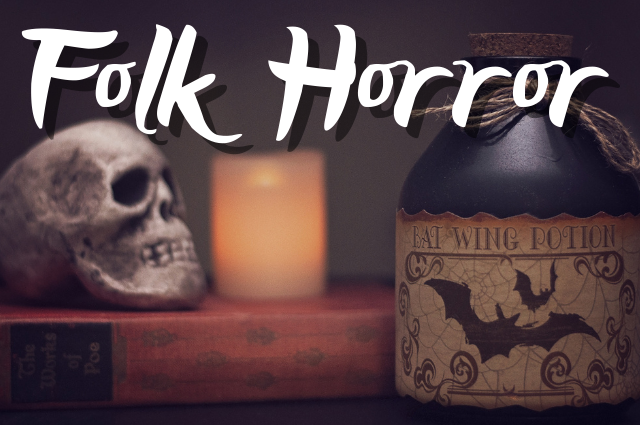Without going into a lecture about the deep history of the Folk Horror genre, I just want to teach you how to write it. There are certain elements of Folk Horror that you need to know before you begin writing your novel. Elements like setting, culture, and the expression of a blatant message are some key factors of the Folk Horror genre. But there are more.
Folk Horror Atmosphere
I placed this first because it is, without a doubt, the most important one that a writer should already have figured out before the novel gets underway. An isolated setting is mandatory. It exists as a secret. In some cases, the setting in Folk Horror might be in an urban society, but the cult goes “underground” to practice its rituals and customs. This is uncommon.
A few elements of a Folk Horror setting may involve historical-looking atmospheres. Victorian-esque houses or stone buildings might be the norm. A common location would be in the deep woods, away from polite society.
Folk Horror shares traits with Gothic Horror when it comes to atmosphere. The overall atmosphere could be eerie, using mist and moonlight to produce dark vibes. Many of the scenes could take place at night. Shadows and supernatural elements would thrive in nighttime settings.
The general colors in these stories are not typically loud or varied. Writers tend to use dark colors, such as blacks and grays.
Of course, the primary Folk Horror film, “The Wicker Man,” smashes the tropes. Much of that film is taken during the day. Vivid colors of the trees and grass and sunset are used as a way to throw off the viewer. The peaceful setting fools the viewer to ensure that what they are watching is not a horror movie, but more of a who-dun-it mystery. It isn’t until the legendary climax of “The Wicker Man” do we realize the main character has been set up to fulfill a Pagan ritual. In this case, the deliberate technique to show atmosphere in a positive light tricked the audience.
Folk Horror Outsiders
Because Folk Horror uses culture as its driving force, an outsider who doesn’t subscribe to that culture needs to find its way in. It is this sudden intrusion into these customs that highlights the concerns of the main character.
This genre, more or less, is a reaction to many things, mostly Christianity. Folk Horror celebrates ritual and witchcraft. The outsider is usually an individual who openly rejects these customs, making the main character a target.
The outsider usually suffers a tragic ending. This is not the case all the time, but it is common. Therefore, these narratives classify as a Tragedy, of sorts. His presence is one of shock, not knowing how to handle the sudden circumstances around him. This shock leads him to make choices he hasn’t made before. And in many cases, the cult of the town has manipulated the situation where the main character cannot leave once he has found out their true intentions.
As a result of the main character commonly facing a tragic ending, the audience must deal with a message about morality, much like Shakespearian tragedy. Why would the main character die? What message and theme does it provide? I firmly believe that the writer should have this message crystal clear before beginning the novel. If the writer reaches the end and they didn’t figure this message out, much rewriting will take place to fix it.
Folk Horror Ambitions
To understand Folk Horror, a writer should know why it uses the term, “Folk.” This term is important because it represents a significant element that separates it from other genres of storytelling. “Folk,” in short, means the people of that culture and the endless avenues that any culture produces. From clothing and music to artworks or storytelling, folk is about community traditions and its ways of life.
In Folk Horror, you are dealing with a city or a town that has either adopted or always had a subculture operating in secret. This secret society of Paganism and general worship of nature stems from pre-Christian Europe. Before Christianity spread throughout the world, especially much of Europe, occult practices were common, such as human sacrifice to satisfy nature in some way. They embraced nature as a supernatural force that interacted with them. They developed witchcraft, black magic, etc.
When Christianity spread, many of these open forms of Pagan worship became limited in size, but still practiced in secret. Thus, giving rise to the genre of Folk Horror we know today. Because of Folk Horror’s creation from Christianity, many of the narratives have themes of faith-based beliefs that oppose Christianity.
Folk Horror Technology
The problem of 21st Century technology isn’t limited to the Folk Horror genre. But it certainly doesn’t help when telling a Folk Horror story. In fact, smartphones and computer access truly impede any story because it stops conflict, suspense, and plot.
Because Folk Horror is generally considered a tale of an isolated area, it could benefit the writer’s approach to the story. Perhaps, the remote location makes it difficult to find Wi-Fi service. Or maybe there is one electrical hub in the small town that controls everything. What would happen if it were to break down? Limiting the ability to immediately call 9-1-1 when a character is in trouble is a major problem that every author must work around in their novels.
Folk Horror can only exist in a remote place where technology has been either stripped completely or controlled by the members of the cult. Remember, the secret society must remain a secret.
If you would like to watch videos about creative writing, you can click here.
To download my eBook to write better suspense, click here.
Click here to see my other creative writing articles.
